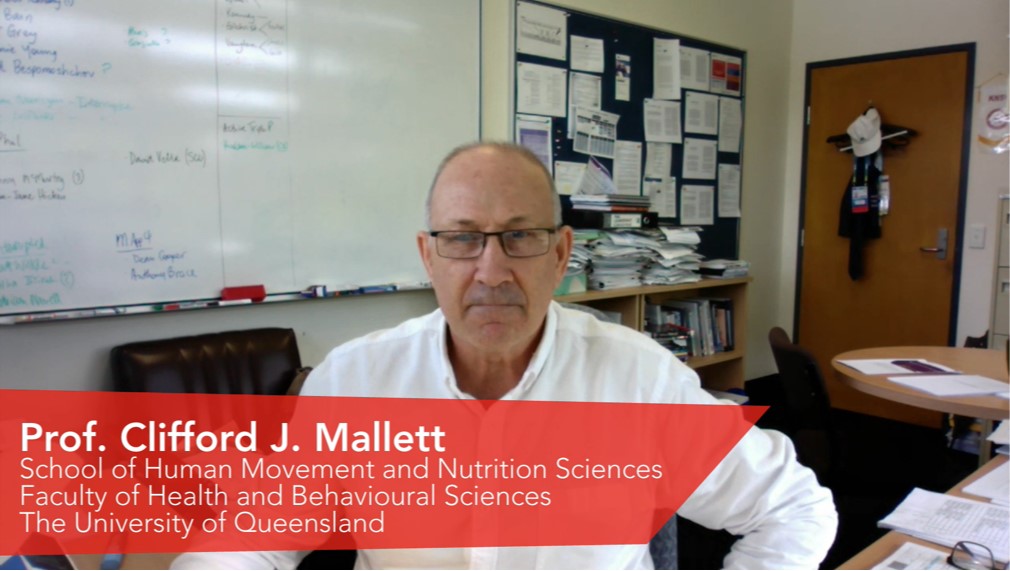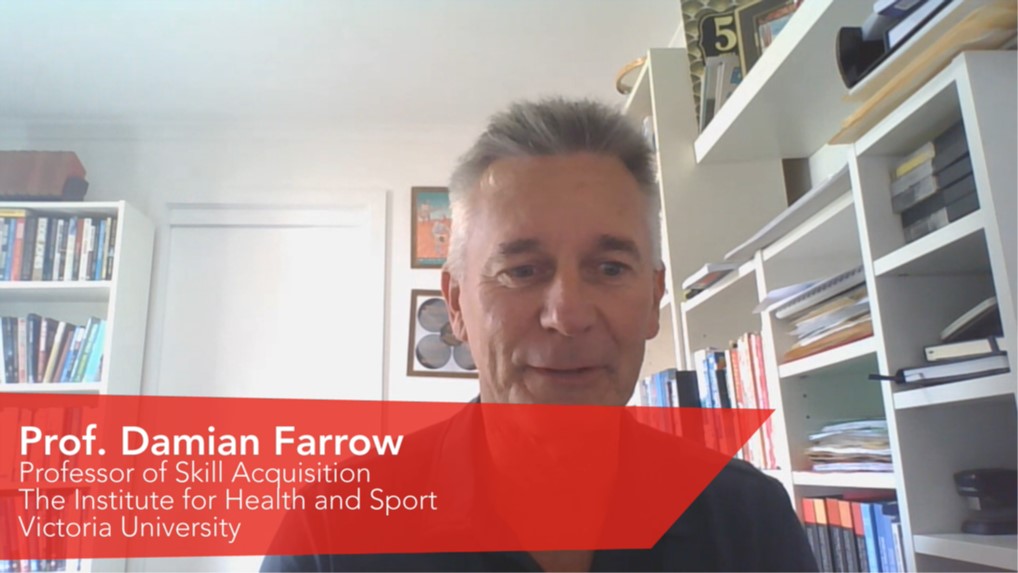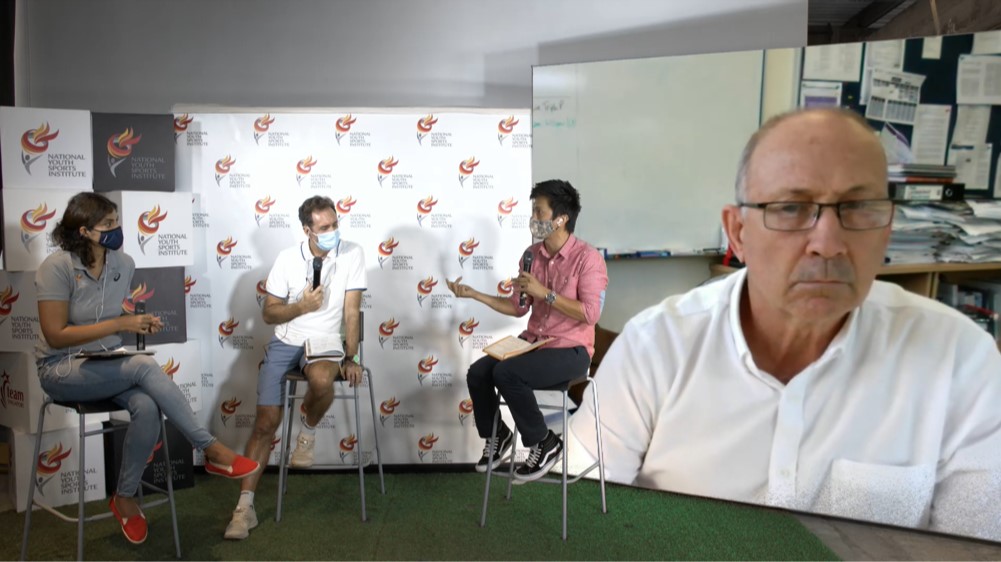NYSI Youth Coaching Conference 2021: Supporting the Singapore youth coach

Professor Clifford J. Mallett and Professor Damian Farrow were the two keynote speakers at the 5th NYSI Youth Coaching Conference held at the National Youth Sports Institute, 5 Stadium Lane, on 18 March 2021.
Professor Clifford Mallett introduced a list of demands that coaches face when managing youth athletes, and how they can use different methods to produce the best outcomes, for both themselves and the athletes that they support.
Firstly, coaches have to understand the uniqueness and complexity of a youth’s behaviour and development. Youths go through different changes at multiple levels - physical, biological, and psychosocial.
Prof. Mallett mentioned that some of the key issues that youths struggle with include finding a sense of belonging, establishing self-identity and independence, coping with increased pressure from peers, parents and society, and dealing with a challenged self-esteem. Prof. Mallett said that youth athletes “often worry about their appearances, abilities and relationships”.
The implications are that youth coaches need to be more understanding and aware of these changes. “Prevention does not equal development,” said Prof. Mallett. Youth coaches are encouraged instead to focus on developing and nurturing their athlete’s assets (the 4C’s - competence, confidence, connection, and character) in order to achieve positive outcomes (the 3P’s - participation, performance, and personal development) so that they can subsequently thrive in and through sports. Youth coaches need to have patience throughout this process.
In this highly competitive space, Prof. Mallett stressed the importance to give youth athletes opportunities for independence and initiative, to acknowledge the health and well-being of the athletes, and encourage conversations beyond the sport. In this way, youth athletes feel valued as a person, which in turn contributes to their personal development.
All of this begins with a solid and functional coach-athlete relationship. Beyond just being a coach, they also have to be a sculptor, performer, leader, and a learner. With regard to the role of a sculptor, Prof. Mallett talked about the greenhouse effect, and how important and necessary it is in sculpting and “creating a learning environment that is both stable and predictable”, to inspire a sense of trust and acceptance so that the athlete can flourish in.
Being a performer requires coaches to reflect on their effectiveness as a coach. Reflection encourages coaches to remain open to alternative views and ideas, to be flexible in changing up individualised approaches to athletes, and to accept honest, constructive feedback.
Coaches also take up the role of a leader. Coaches are influential role models because youth athletes are at such an impressionable age. Coaches should “model the behaviour you want athletes to learn… and self-regulation of thoughts and behaviours should be consistent to shape their learning and development,” said Prof. Mallett.
Finally, in order to be an effective coach, coaches have to be continual learners. This eagerness to learn can take the form of improving professional knowledge, intrapersonal knowledge (philosophy, values, beliefs), and interpersonal knowledge (relationships, pedagogy).
Prof. Mallett challenged youth coaches to consider what influenced their learning, be it passion or curiosity, and what their purpose was for coaching, in order to refine and make their coaching more meaningful. “Only you can drive your own learning,” said Prof. Mallett.
Following that, Prof. Farrow said that the youth coaches face the challenge of recognising the unique qualities an individual brings to their sport. To do so, youth coaches first have to take a deeper look at their talent and not rush to intervene and change it.
Prof. Farrow defined skill with in the following way: Skill = (Technique + Adaptability) under Pressure. He recommended using a skill acquisition periodisation framework within the high-performance setting as it allows youth coaches to customise training programmes and monitor the progression of their athletes.
Adopting the SPORT acronym, the framework highlights five principles: Specificity, Progression, Overload, Reversibility and Tedium.
Specificity refers to how close the exercise prescribed in practice transfers to the performance context. The key to measuring specificity is to compare the practice setting to the competitive setting.
For example, in practice sessions, opponents may be more cooperative in nature when compared to actual competition. Drills with no defenders are purely choreographed movements that do not translate to real-game setting with other players on court. If such drills are overused in training, athletes may not develop decision-making skills and spatial awareness that is needed in a competition setting. Therefore, it is important for coaches to control the environment to get a transfer of skill from practice to game.
Progression refers to the observable improvement of skill in an athlete. An improvement allows coaches to challenge their athlete by increasing the skill challenge, leading to a greater capacity and tolerance. Variations in performance are natural, especially with youth athletes going through growth spurts. Youth coaches also need to determine the optimal challenge point to ensure that their athletes progress.
Overload involves repetition without repetition. This involves finding different ways to practice a skill. There are advantages to overloading the performer to progress skill learning. One of the powerful ways to manipulate load is via the conditions of practice that the athlete is exposed to. More variability allows for more load and learning.
An example is to make subtle changes of the same skill, such as adding defenders to shooting practice or practicing different serves. Observing how quickly they can make the switch, youth coaches can subsequently increase the complexity of skill.
One of the associated outcomes with such variability is greater task errors. However, these errors are meant to further invoke greater use of working memory. Players begin to think, “What am I doing? What should I change my kick to?” This leads to an increase in cognitive load. However, athletes learn from mistakes and are motivated by success. Success, as determined by performance improvement, is a major motivation to continue learning.
Reversibility happens when athletes lose training benefits when a skill is not practiced enough. Data capture and analysis helps coaches to understand the influence of reversibility. Ideally, coaches have found the optimal challenge point for the individual athlete and the first repetition is as challenging as the last.
Tedium is the state of being bored due to the monotony within the training programme. To avoid this, coaches can increase variability of practice and also athlete engagement by getting them involved in the actual training process. This can be done through self-regulation.
Leading up to the Rio Olympics, Prof. Farrow and his team worked with Australian swimmer Mack Horton to deliver a 12-month intervention focused on small wins. Horton’s contact time on the wall during turns was monitored with the focus on the quality of the turns as opposed to doing more turns. During the Olympic Games, it was Horton’s turn time that led to his good performance.
"If you can focus in on a specific aspect of a skill and progressively develop it and not get side-tracked by other things that coaches often see, we can have an impact. They key to this is not more practice, but higher quality practice and giving feedback to engage (athletes)," said Prof. Farrow.

Panel Discussion with Dr. Neha Malhotra, Mr Luis Cunha, Dr. Jonathan Leo Ng, and Prof. Cliff Mallett (from left to right)